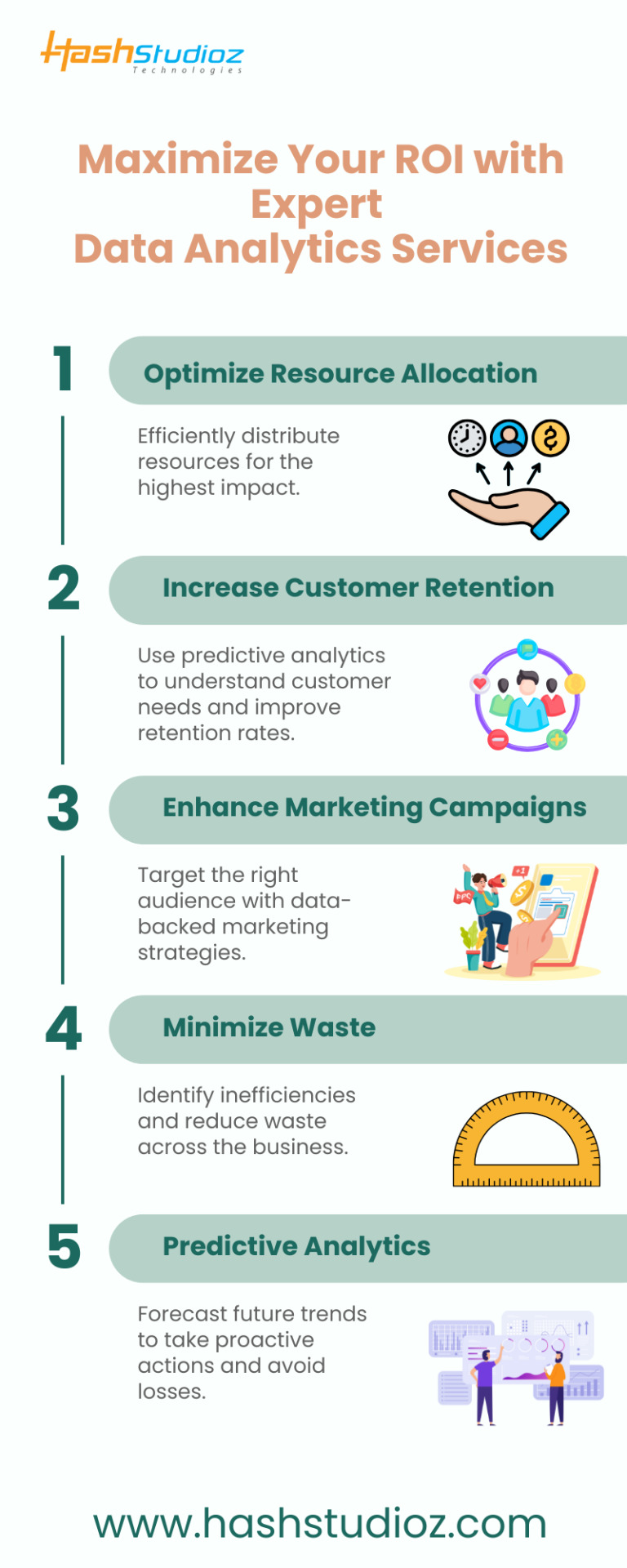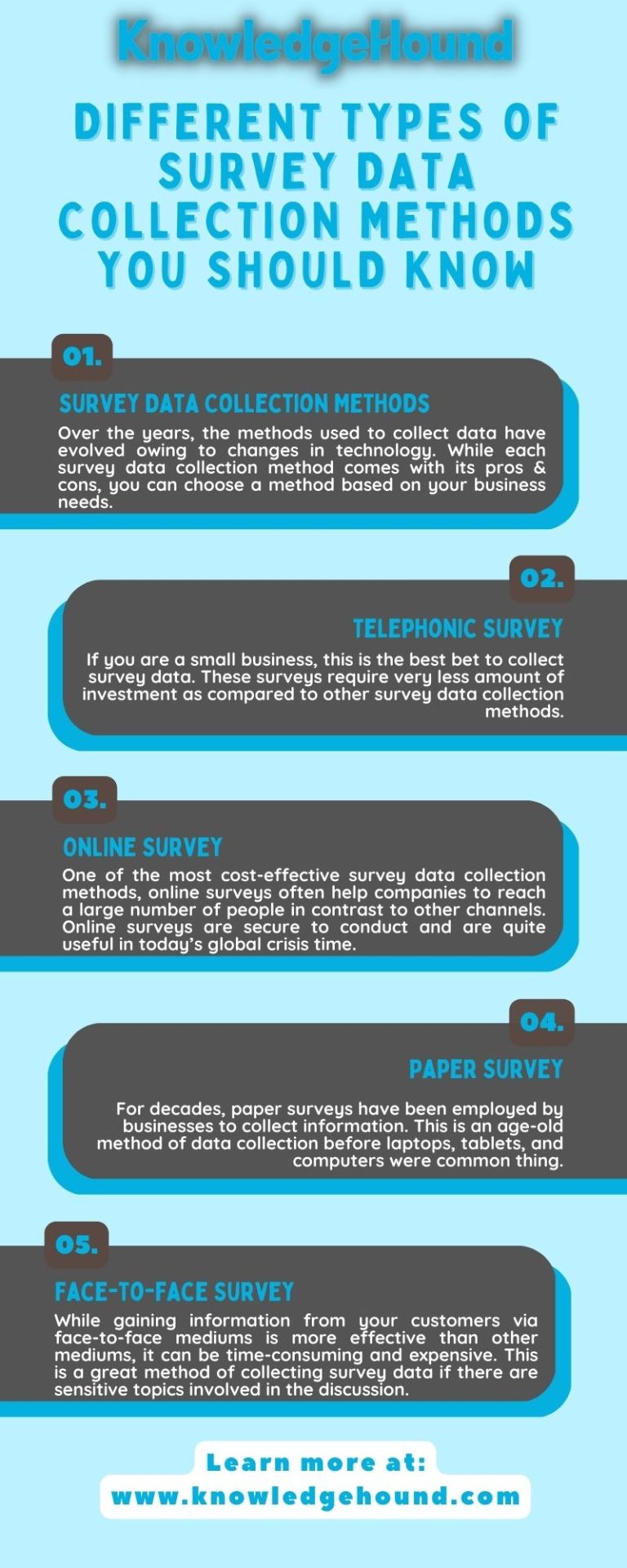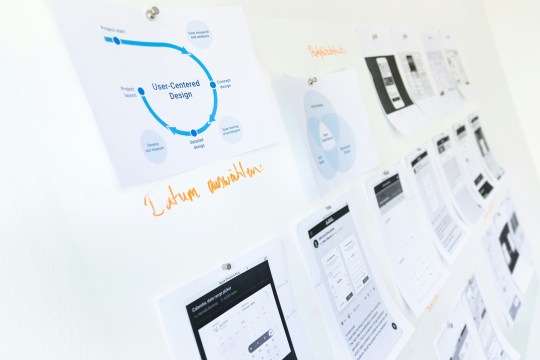#Data Analytics Solution
Explore tagged Tumblr posts
Text

Data analytics services aren’t just about analyzing data—they’re about unlocking new opportunities for your business. By leveraging expert analytics, you can drive smarter decisions, optimize processes, and maximize your ROI.
#Data Analytics Companies#Data Analytics Solution#Data Analytics Services#Data Analytics Consultant#Data analytics consulting Services#Hire data analyst#Data Management Services#Data and analytics services#Analytics Consulting Services#Data science consulting Services#Data Science Consultant#Data Analytics Services Company
0 notes
Text
Leverage Your Data To Drive Growth And Innovation
Data is one of your most valuable assets; unlocking its potential is crucial in gaining a competitive edge. Focus Dynamics provides comprehensive data and analytics solutions, utilising Power BI and Azure Synapse to transform raw data into actionable insights. Our services enable you to make data-driven decisions that propel your business forward.
With our expertise, you can visualise complex data, identify trends, and predict outcomes, ensuring that every business decision is informed and strategic
#data analytics#business central#dynamics 365 business central#dynamics business central#microsoft dynamics business central#dynamics 365 consultancy#dynamics 365 consultant#dynamics 365 consultants#dynamics implementation#data analytics solution
0 notes
Text
Better Decisions with Data Maturity Assessment | Tibil Solutions
In the healthcare sector, data maturity assessment entails determining how well it can handle and use data in a variety of ways. Data governance, quality, analytical capabilities, infrastructure, and culture are usually taken into account in this evaluation. Limited analytical capabilities, uneven data quality, and scattered data sources can be challenges for organisations with lower degrees of maturity. Organisations that are more mature put strong frameworks in place for data governance, set standards for data quality, use advanced analytics to gain insights, and make investments in scalable data infrastructure. Creating a culture that is data-driven also becomes important, motivating stakeholders to make data-driven decisions. Enabling organisations to fully utilise their data assets to enhance patient outcomes, operational effectiveness, and decision-making processes while guaranteeing compliance with regulations is the ultimate goal of data maturity assessments in the healthcare industry.

0 notes
Text
unknown
Integrated Optimal Data Guidance
We provide a data relationship management tool that enables organizations to manage complex data structures and connections more effectively. Contact us now!
#Business Intelligence Specialist#data analytics#data analytics solution#analytics software#databases management#analytics management#charity management system#non profit donors database#donor management software
0 notes
Text
Big Data and AI: The Perfect Partnership for Future Innovations

Innovation allows organizations to excel at differentiation, boosting competitive advantages. Amid the growth of industry-disrupting technologies, big data analytics and artificial intelligence (AI) professionals want to support brands seeking bold design, delivery, and functionality ideas. This post discusses the importance of big data and AI, explaining why they matter to future innovations and business development.
Understanding Big Data and AI
Big data is a vast data volume, and you will find mixed data structures because of continuous data collection involving multimedia data objects. A data object or asset can be a document, an audio track, a video clip, a photo, or identical objects with special file formats. Since big data services focus on sorting and exploring data objects’ attributes at an unprecedented scale, integrating AI tools is essential.
Artificial intelligence helps computers simulate human-like thinking and idea synthesis capabilities. Most AI ecosystems leverage advanced statistical methods and machine learning models. Their developers train the AI tools to develop and document high-quality insights by processing unstructured and semi-structured data objects.
As a result, the scope of big data broadens if you add AI integrations that can determine data context. Businesses can generate new ideas instead of recombining recorded data or automatically filter data via AI-assisted quality assurances.
Why Are Big Data and AI Perfect for Future Innovations?
1| They Accelerate Scientific Studies
Material sciences, green technology projects, and rare disorder research projects have provided humans with exceptional lifestyle improvements. However, as markets mature, commoditization becomes inevitable.
At the same time, new, untested ideas can fail, attracting regulators’ dismay, disrespecting consumers’ beliefs, or hurting the environment. Additionally, bold ideas must not alienate consumers due to inherent complexity. Therefore, private sector stakeholders must employ scientific methods to identify feasible, sustainable, and consumer-friendly product ideas for brand differentiation.
AI-powered platforms and business analytics solutions help global corporations immediately acquire, filter, and document data assets for independent research projects. For instance, a pharmaceutical firm can use them during clinical drug formulations and trials, while a car manufacturer might discover efficient production tactics using AI and big data.
2| Brands Can Objectively Evaluate Forward-Thinking Business Ideas
Some business ideas that a few people thought were laughable or unrealistic a few decades ago have forced many brands and professionals to abandon conventional strategies. Consider how streaming platforms’ founders affected theatrical film releases. They have reduced the importance of box office revenues while increasing independent artists’ discoverability.
Likewise, exploring real estate investment opportunities on a tiny mobile or ordering clothes online were bizarre practices, according to many non-believers. They also predicted socializing through virtual reality (VR) avatars inside a computer-generated three-dimensional space would attract only the tech-savvy young adults.
Today, customers and investors who underestimated those innovations prefer religiously studying how disrupting startups perform. Brands care less about losing money than missing an opportunity to be a first mover for a niche consumer base. Similarly, rejecting an idea without testing it at least a few times has become a taboo.
Nobody can be 100% sure which innovation will gain global momentum, but AI and big data might provide relevant hints. These technologies are best for conducting unlimited scenario analyses and testing ideas likely to satisfy tomorrow’s customer expectations.
3| AI-Assisted Insight Explorations Gamifies Idea Synthesis
Combining a few ideas is easy but finding meaningful and profitable ideas by sorting the best ones is daunting. Innovative individuals must embrace AI recommendations to reduce time spent on brainstorming, product repurposing, and multidisciplinary collaborations. Furthermore, they can challenge themselves to find ideas better than an AI tool.
Gamification of brainstorming will facilitate a healthy pursuit of novel product features, marketing strategies, and customer journey personalization. Additionally, incentivizing employees to leverage AI and big data to experiment with designing methods provides unique insights for future innovations.
4| You Can Optimize Supply Chain Components with Big Data and AI Programs
AI can capture extensive data on supply chains and offer suggestions on alternative supplier relations. Therefore, businesses will revise supply and delivery planning to overcome the flaws in current practices.
For instance, Gartner awarded Beijing’s JD.com the Technology Innovation Award in 2024 because they combined statistical forecasting. The awardee has developed an explainable artificial intelligence to enhance its supply chain. Other finalists in this award category were Google, Cisco, MTN Group, and Allina Health.
5| Academia Can Embrace Adaptive Learning and Psychological Well-Being
Communication barriers and trying to force all learners to follow the standard course material based on a fixed schedule have undermined educational institutions’ goals worldwide. Understandably, expecting teachers to customize courses and multimedia assets for each student is impractical and humanly infeasible.
As a result, investors, policymakers, parents, and student bodies seek outcome-oriented educational innovations powered by AI and big data for a learner-friendly, inclusive future. For instance, some edtech providers use AI computer-aided learning and teaching ecosystems leveraging videoconferencing, curriculum personalization, and psycho-cognitive support.
Adaptive learning applications build student profiles and segments like marketers’ consumer categorizations. Their AI integrations can determine the ideal pace for teaching, whether a student exhibits learning disabilities, and whether a college or school has adequate resources.
Challenges in Promoting Innovations Based on Big Data and AI Use Cases
Encouraging stakeholders to acknowledge the need for big data and AI might be challenging. After all, uninformed stakeholders are likely to distrust tech-enabled lifestyle changes. Therefore, increasing AI awareness and educating everyone on data ethics are essential.
In some regions, the IT or network infrastructure necessary for big data is unavailable or prone to stability flaws. This issue requires more investments and talented data specialists to leverage AI tools or conduct predictive analyses.
Today’s legal frameworks lack provisions for regulating AI, big data, and scenario analytics. So, brands are unsure whether expanding data scope will get public administrators’ approvals. Lawmakers must find a balanced approach to enable AI-powered big data innovations without neglecting consumer rights or “privacy by design” principles.
Conclusion
The future of enterprise, institutional, and policy innovations lies in responsible technology implementations. Despite the obstacles, AI enthusiasts are optimistic that more stakeholders will admire the potential of new, disruptive technologies.
Remember, gamifying how your team finds new ideas or predicting the actual potential of a business model necessitates AI’s predictive insights. At the same time, big data will offer broader perspectives on global supply chains and how to optimize a company’s policies.
Lastly, academic improvements and scientific research are integral to developing sustainable products, accomplishing educational objectives, and responding to global crises. As a result, the informed stakeholders agree that AI and big data are perfect for shaping future innovations.
2 notes
·
View notes
Text
Versatile IoT Development with JavaScript for Connected Devices
2 notes
·
View notes
Text
Your Premier Data Analytics Agency
Welcome to Eaglytics.co, where data meets precision to empower your business decisions. As a leading Data Analytics Agency, we pride ourselves on transforming raw data into actionable insights, guiding you towards informed strategies and sustainable growth.
🚀 Why Choose Eaglytics.co?
✨ Unparalleled Expertise: At Eaglytics.co, we house a team of seasoned data analysts and experts who specialize in deciphering the complexities of data. With years of industry experience, we bring unparalleled expertise to the table, ensuring that your data is not just collected but strategically utilized to drive success.
📊 Comprehensive Data Solutions: We understand that every business has unique needs. That's why our Data Analytics Agency offers a comprehensive suite of services, including data collection, analysis, visualization, and interpretation. Whether you're a startup or an established enterprise, we tailor our solutions to suit your specific requirements.
🔍 Cutting-Edge Technology: Staying ahead in the data-driven era requires leveraging the latest technologies. Eaglytics.co is committed to employing cutting-edge tools and methodologies to extract meaningful patterns from your data. Our advanced analytics solutions ensure that you stay at the forefront of innovation.
💡 Actionable Insights: Data is only as valuable as the insights it provides. Eaglytics.co goes beyond raw numbers and statistics, delivering actionable insights that empower you to make informed decisions. Our goal is to turn data into a strategic asset for your business, driving measurable results.
🌐 User-Friendly Platform: Explore the power of data without the complexity. Eaglytics.co offers a user-friendly platform that simplifies the analytics process. From intuitive dashboards to interactive reports, we make it easy for you to navigate and derive value from your data.
🤝 Trusted Partnerships: We believe in fostering strong partnerships with our clients. Eaglytics.co is not just a service provider; we are your dedicated allies in the journey towards data-driven success. Our commitment to transparency, reliability, and excellence sets us apart in the realm of Data Analytics.
Ready to unlock the full potential of your data? Visit Eaglytics. co and embark on a transformative journey with a trusted Data Analytics Agency. Elevate your decision-making, drive innovation, and secure a competitive edge in your industry. Your data has a story to tell – let us help you decipher it. For more information, you can visit our website: https://eaglytics-co.com/
#Data Analytics Agency#eCommerce Analytics#e-commerce analytics solutions#digital marketing#data analytics#business analytics#google analytics
2 notes
·
View notes
Text
Difference between data analysis and data analytics and data science
Data Analysis, Data Analytics, and Data Science are closely related fields but have distinct differences in their focus and methodologies. Here's an overview of each:
Data Analysis: Data analysis involves the process of inspecting, cleaning, transforming, and modeling data to derive meaningful insights and make informed decisions. It focuses on examining datasets to identify patterns, trends, and relationships. Data analysis often employs statistical techniques and tools to extract information from the data.
Data analysis typically involves:
Descriptive Analysis: Summarizing and describing data using statistical measures, charts, and graphs.
Exploratory Analysis: Exploring data to discover patterns, relationships, and outliers.
Inferential Analysis: Making inferences and drawing conclusions based on sample data to make predictions about a larger population.
Data Analytics: Data analytics expands on data analysis by incorporating advanced techniques and technologies to gain deeper insights into data. It involves the use of statistical modeling, machine learning, and data visualization tools to extract knowledge and draw conclusions. Data analytics focuses on answering specific business questions and solving problems.
Data analytics typically involves:
Predictive Analytics: Using historical data and statistical models to forecast future outcomes and trends.
Prescriptive Analytics: Recommending actions and strategies based on data insights to optimize business processes and decision-making.
Data Visualization: Presenting data in visual formats like charts, graphs, and dashboards to facilitate understanding and communication.
Data Science: Data science encompasses a broader set of skills and techniques that combine data analysis and analytics with elements of computer science and programming. It involves extracting knowledge and insights from complex and large-scale datasets through various methodologies, including statistical modeling, machine learning, data mining, and programming.
Data science typically involves:
Data Cleaning and Preprocessing: Preparing and transforming raw data for analysis.
Machine Learning: Developing and deploying algorithms to automatically learn from data and make predictions or decisions.
Big Data Analytics: Handling and analyzing large volumes of data that traditional methods may not be able to handle efficiently.
Data Engineering: Designing and implementing data pipelines, storage solutions, and database systems.
Deep Learning: Applying advanced neural networks to analyze and extract insights from complex data structures.
In summary, data analysis focuses on exploring and understanding data using statistical techniques, while data analytics involves using advanced tools and methodologies to gain actionable insights for decision-making. Data science encompasses a broader range of skills and techniques, combining data analysis and analytics with computer science to extract knowledge from complex datasets and solve complex problems.
Sources- https://us.sganalytics.com/data-management-analytics-services/

#data analytics services#data analytics solutions#data analytics services USA#Data Analytics Solutions USA#Data Analytics Consulting
2 notes
·
View notes
Text
Data analytics in financial services
To compete in the highly regulated and fiercely competitive space, enterprises that provide Financial Consultancy Services and Financial Management Services need clear and individualized visibility of their end customers.
Financial Consultancy Services and Financial Management Services need clear and individualized visibility of their end customers. AI/ML-based data analytics in financial services enables businesses to understand the power of context and deliver an effective Banking-as-a-Service (BaaS) strategy.
#ai consultancies#supply chain data analytics#data migration consulting services#data analytics solutions#ai consulting
2 notes
·
View notes
Text

This article will discuss how hotels can harness big data analytics to gain a competitive edge in their marketing efforts and steps you can take right away to start using big data analytics in your hotel’s branding strategies today. Read More....
#Big Data Analytics#phonesuite direct#phonesuite pbx#phonesuite dealers#PBX System#VoIP Phone#VoIP Advantages#Hotel Phone System#IP telephony#Ip Pbx System#hotel phone system#texas phone syste#Cloud Pbx System#Pbx System in Texas#VoIP Phone System#VoIP technology#Telephony solutions#PBX Communications#SIP Trunks#Voice call#Voice Calls#Modern Telephone#VoIP Telephone#hotel hospitality#SIP phones#hospitality communication#Voiceware PBX#innovative solutions
4 notes
·
View notes
Photo

In this digital world, companies rely on survey data to gather information about their targeted audience and their preferences. Businesses employ different methods to collect the survey data and analyze it. There are various mediums used to collect opinions and feedback from customers. While conducting a survey, researchers often choose multiple sources to collect data. KnowledgeHound shares the different methods used to collect the data.,,Learn more
#survey data#survey tools#knowledgehound#research analysis#survey analysis#database management#data management#data insights#longitudinal data#data exploration#database tool#analytics solution#consumer data#data sharing
1 note
·
View note
Text

Successful data management services ensure efficient data collection, storage, and organization while maintaining quality, security, and compliance. They empower businesses with scalable systems, seamless access, actionable analytics, and ongoing monitoring for optimal performance.
#Data Analytics Companies#Data Analytics Solution#Data Analytics Services#Data Analytics Consultant#Data analytics consulting Services#Hire data analyst#Data Management Services#Data and analytics services#Analytics Consulting Services#Data science consulting Services#Data Science Consultant#Data Analytics Services Company
0 notes
Text
Ultimate Guide to DeepSeek AI for Business Growth
Table of Contents of DeepSeek AI for Business Growth1. Introduction: Why AI is Essential for Modern Business Growth2. What Is DeepSeek AI?3. Top 5 DeepSeek AI Tools for Scaling Businesses3.1 Demand Forecasting Engine3.2 Customer Lifetime Value (CLV) Predictor3.3 Automated Supply Chain Optimizer3.4 Dynamic Pricing Module3.5 Sentiment Analysis Hub4. How DeepSeek AI Reduces Costs and Boosts…
#AI automation 2024#AI budgeting#AI business growth#AI for non-tech teams#AI for startups#AI implementation guide#AI in retail#AI supply chain#Business Intelligence#cost reduction strategies#data-driven decisions#DeepSeek AI#enterprise AI adoption#fintech AI solutions#generative AI for business#Predictive Analytics#ROI optimization#scaling with AI#SME AI tools#startup scaling
0 notes
Text
Boost your business strategy with data analytics services. Gain insights, improve decision-making, and drive growth with data-driven solutions.
#federal consulting solutions#data analytics services#management consulting#ae strategies#management consulting services#federal consulting
0 notes
Text
issuu
Extremely Valuable Business Insights
Our crm business intelligence provides a cohesive strategy for raw data from a variety of sources to improve timely and accurate decision-making. Contact us now!
#Business Intelligence Specialist#data analytics#data analytics solution#analytics software#databases management#analytics management#charity management system#non profit donors database#donor management software
0 notes
Text
How Can You Ensure Data Quality in Healthcare Analytics and Management?

Healthcare facilities are responsible for the patient’s recovery. Pharmaceutical companies and medical equipment manufacturers also work toward alleviating physical pain, stress levels, and uncomfortable body movement issues. Still, healthcare analytics must be accurate for precise diagnosis and effective clinical prescriptions. This post will discuss data quality management in the healthcare industry.
What is Data Quality in Healthcare?
Healthcare data quality management includes technologies and statistical solutions to verify the reliability of acquired clinical intelligence. A data quality manager protects databases from digital corruption, cyberattacks, and inappropriate handling. So, medical professionals can get more realistic insights using data analytics solutions.
Laboratories have started emailing the test results to help doctors, patients, and their family members make important decisions without wasting time. Also, assistive technologies merge the benefits of the Internet of Things (IoT) and artificial intelligence (AI) to enhance living standards.
However, poor data quality threatens the usefulness of healthcare data management solutions.
For example, pharmaceutical companies and authorities must apply solutions that remove mathematical outliers to perform high-precision data analytics for clinical drug trials. Otherwise, harmful medicines will reach the pharmacist’s shelf, endangering many people.
How to Ensure Data Quality in the Healthcare Industry?
Data quality frameworks utilize different strategies to prevent processing issues or losing sensitive intelligence. If you want to develop such frameworks to improve medical intelligence and reporting, the following 7 methods can aid you in this endeavor.
Method #1| Use Data Profiling
A data profiling method involves estimating the relationship between the different records in a database to find gaps and devise a cleansing strategy. Data cleansing in healthcare data management solutions has the following objectives.
Determine whether the lab reports and prescriptions match the correct patient identifiers.
If inconsistent profile matching has occurred, fix it by contacting doctors and patients.
Analyze the data structures and authorization levels to evaluate how each employee is accountable for specific patient recovery outcomes.
Create a data governance framework to enforce access and data modification rights strictly.
Identify recurring data cleaning and preparation challenges.
Brainstorm ideas to minimize data collection issues that increase your data cleaning efforts.
Ensure consistency in report formatting and recovery measurement techniques to improve data quality in healthcare.
Data cleaning and profiling allow you to eliminate unnecessary and inaccurate entries from patient databases. Therefore, healthcare research institutes and commercial life science businesses can reduce processing errors when using data analytics solutions.
Method #2| Replace Empty Values
What is a null value? Null values mean the database has no data corresponding to a field in a record. Moreover, these missing values can skew the results obtained by data management solutions used in the healthcare industry.
Consider that a patient left a form field empty. If all the care and life science businesses use online data collection surveys, they can warn the patients about the empty values. This approach relies on the “prevention is better than cure” principle.
Still, many institutions, ranging from multispecialty hospitals to clinical device producers, record data offline. Later, the data entry officers transform the filled papers using scanners and OCR (optical character recognition).
Empty fields also appear in the database management system (DBMS), so the healthcare facilities must contact the patients or reporting doctors to retrieve the missing information. They use newly acquired data to replace the null values, making the analytics solutions operate seamlessly.
Method #3| Refresh Old Records
Your physical and psychological attributes change with age, environment, lifestyle, and family circumstances. So, what was true for an individual a few years ago is less likely to be relevant today. While preserving historical patient databases is vital, hospitals and pharma businesses must periodically update obsolete medical reports.
Each healthcare business maintains a professional network of consulting physicians, laboratories, chemists, dietitians, and counselors. These connections enable the treatment providers to strategically conduct regular tests to check how patients’ bodily functions change throughout the recovery.
Therefore, updating old records in a patient’s medical history becomes possible. Other variables like switching jobs or traveling habits also impact an individual’s metabolism and susceptibility to illnesses. So, you must also ask the patients to share the latest data on their changed lifestyles. Freshly obtained records increase the relevance of healthcare data management solutions.
Method #4| Standardize Documentation
Standardization compels all professionals to collect, store, visualize, and communicate data or analytics activities using unified reporting solutions. Furthermore, standardized reports are integral to improving data governance compliance in the healthcare industry.
Consider the following principles when promoting a documentation protocol to make all reports more consistent and easily traceable.
A brand’s visual identities, like logos and colors, must not interfere with clinical data presentation.
Observed readings must go in the designated fields.
Both the offline and online document formats must be identical.
Stakeholders must permanently preserve an archived copy of patient databases with version control as they edit and delete values from the records.
All medical reports must arrange the data and insights to prevent ambiguity and misinterpretation.
Pharma companies, clinics, and FDA (food and drug administration) benefit from reporting standards. After all, corresponding protocols encourage responsible attitudes that help data analytics solutions avoid processing problems.
Method #5| Merge Duplicate Report Instances
A report instance is like a screenshot that helps you save the output of visualization tools related to a business query at a specified time interval. However, duplicate reporting instances are a significant quality assurance challenge in healthcare data management solutions.
For example, more than two nurses and one doctor will interact with the same patients. Besides, patients might consult different doctors and get two or more treatments for distinct illnesses. Such situations result in multiple versions of a patient’s clinical history.
Data analytics solutions can process the data collected by different healthcare facilities to solve the issue of duplicate report instances in the patients’ databases. They facilitate merging overlapping records and matching each patient with a universally valid clinical history profile.
Such a strategy also assists clinicians in monitoring how other healthcare professionals prescribe medicine to a patient. Therefore, they can prevent double dosage complications arising from a patient consuming similar medicines while undergoing more than one treatment regime.
Method #6| Audit the DBMS and Reporting Modules
Chemical laboratories revise their reporting practices when newly purchased testing equipment offers additional features. Likewise, DBMS solutions optimized for healthcare data management must receive regular updates.
Auditing the present status of reporting practices will give you insights into efficient and inefficient activities. Remember, there is always a better way to collect and record data. Monitor the trends in database technologies to ensure continuous enhancements in healthcare data quality.
Simultaneously, you want to assess the stability of the IT systems because unreliable infrastructure can adversely affect the decision-making associated with patient diagnosis. You can start by asking the following questions.
Questions to Ask When Assessing Data Quality in Healthcare Analytics Solutions
Can all doctors, nurses, agents, insurance representatives, patients, and each patient’s family members access the required data without problems?
How often do the servers and internet connectivity stop functioning correctly?
Are there sufficient backup tools to restore the system if something goes wrong?
Do hospitals, research facilities, and pharmaceutical companies employ end-to-end encryption (E2EE) across all electronic communications?
Are there new technologies facilitating accelerated report creation?
Will the patient databases be vulnerable to cyberattacks and manipulation?
Are the clinical history records sufficient for a robust diagnosis?
Can the patients collect the documents required to claim healthcare insurance benefits without encountering uncomfortable experiences?
Is the presently implemented authorization framework sufficient to ensure data governance in healthcare?
Has the FDA approved any of your prescribed medications?
Method #7| Conduct Skill Development Sessions for the Employees
Healthcare data management solutions rely on advanced technologies, and some employees need more guidance to use them effectively. Pharma companies are aware of this as well, because maintaining and modifying the chemical reactions involved in drug manufacturing will necessitate specialized knowledge.
Different training programs can assist the nursing staff and healthcare practitioners in developing the skills necessary to handle advanced data analytics solutions. Moreover, some consulting firms might offer simplified educational initiatives to help hospitals and nursing homes increase the skill levels of employees.
Cooperation between employees, leadership, and public authorities is indispensable to ensure data quality in the healthcare and life science industries. Otherwise, a lack of coordination hinders the modernization trends in the respective sectors.
Conclusion
Healthcare analytics depends on many techniques to improve data quality. For example, cleaning datasets to eliminate obsolete records, null values, or duplicate report instances remains essential, and multispecialty hospitals agree with this concept.
Therefore, medical professionals invest heavily in standardized documents and employee education to enhance data governance. Also, you want to prevent cyberattacks and data corruption. Consider consulting reputable firms to audit your data operations and make clinical trials more reliable.
SG Analytics is a leader in healthcare data management solutions, delivering scalable insight discovery capabilities for adverse event monitoring and medical intelligence. Contact us today if you want healthcare market research and patent tracking assistance.
3 notes
·
View notes